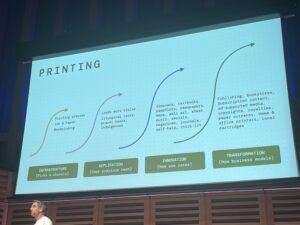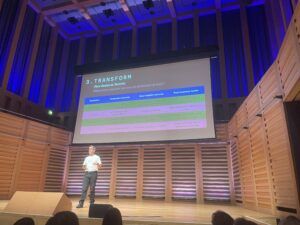What can the old-fashioned printing press teach us about AI? More than you might think…
How History might show the future
Yesterday, I was lucky enough to attend the TURING x SYSTM Growth Summit. All the talks were brilliant, and choosing your favourite is like choosing your favourite child.
But as a History graduate, the one which struck a real chord with me was Matt Learner’s look at how previous revolutions have played out, and what this might look like with the AI revolution. History never repeats but it often rhymes.
The talk looked at comparable technological revolutions and Matt focussed on the invention of Printing and the Internet. Both have followed 4 specific phases.
A revolution in 4 stages
The revolution starts with infrastructure, which is initially applied to existing practices before enabling radical new ideas and business models.
For example, the print revolution began with Gutenberg trying to produce bibles faster and cheaper, and eventually led to modern innovations like on-demand printing of Pokemon cards.
The internet followed the same pattern: starting with laying cables and protocols (infrastructure), then digitizing existing media like newspapers (application to existing models), followed by social networks and user-generated content (radical new ideas), and finally subscription services and the creator economy (new business models).
Matt then applied this same framework to where we are with AI today.
Lessons for the AI era
Judging by the soaring valuation of Nvidia stock, we are still at phase one. So the key thing we need to do is spot what has changed and which constraints no longer apply. For instance, AI removes the constraint that quality content requires human expertise and time—anyone can now generate professional-level writing, images, or code in seconds.
What does it all mean?
We’re at the infrastructure stage, watching the foundations being laid. The big opportunities won’t come from better AI models—they’ll come from figuring out which impossible things are now possible.
Figure that out and you could have the next Unicorn…
Find out more about us
| Learn more about our history, team (and pets!) |



